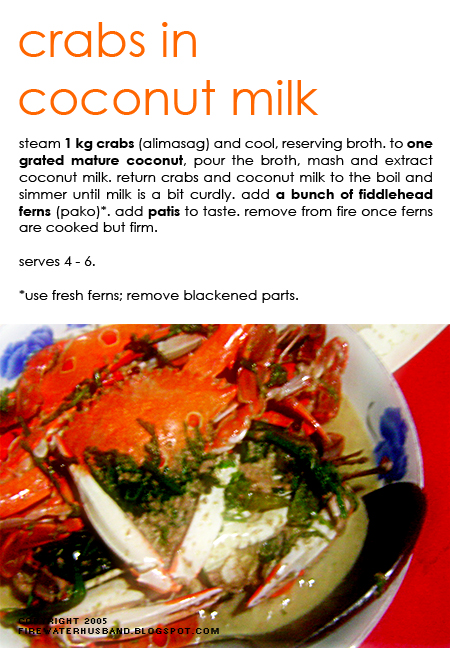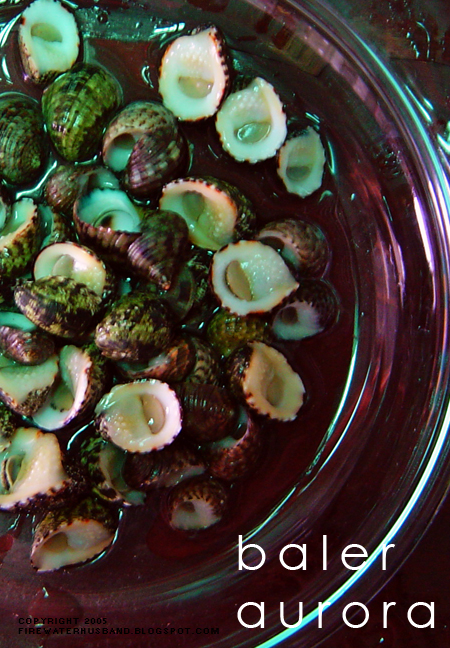Lasang Pinoy 4: Rice
(No photos as of this time since the power outlets in our house went kaput last night.)

Even the richest Filipino cannot survive on putanesca alone; to keep him from jumping up from the dining table and murdering the cook, he must be served rice on a fairly regular basis. (Cecile C.A. Balgos, The Tastes That Bind)I've been searching for my personal soul food and though I can invoke several recipes which made me think of an unhurried life, it should be placed in the comfort food category. I think there should be a difference between those two. The answer came when I imposed a 1-week no-rice lunch diet. It's not really a correct diet, it's partially healthy, and it's not a means to cancel out the All Saints' Day carbo binge I previously had. I just don't like canteen food, that's all. And so in between bites of a pastrami sandwich I felt an unexplainable lightness, that sometimes translates itself into hunger come dinner time, I realized that I am born with it and would never part with it--rice. This is my soul food. In all its colors, shapes and sizes, Oryza sativa is the ultimate soul food for me. Like a blank slate it absorbs the flavor of ulam (viand...ever wonder why there isn't an English term for anything paired with rice?). It creates the balance to the strong flavors of spices. And in leaner times, with salt or soy sauce, it provided for a full tummy, or at least an illusion of it. Like the soul, one cannot live without rice. In my childhood, I was taught to treat rice with sanctity (probably, but that was my impression before but now I realized my parents are bent on avoiding wastage). Spilled rice, whether cooked or uncooked, should be returned to the vessel or the plate, nothing should go directly to the garbage bin. Even if cooked rice dropped on dirt, it should still be returned to the plate or the banana leaf, to hell with hygiene. Logic escapes me why dirty rice should be returned to the plate even if it won't be eaten at all, even if the garbage bin is just a few steps away, but I've learned to respect rice. Before I moved out to adult independence, there was never a time we bought rice from the market, because we have farmlands of our own. It has been part of my allowance even when I was just a student. In pre-employment negotiations there is a rice allowance in the benefits list. Goes to show that rice is always good as cash in this side of the world. We don't have rice gods like those found in Igorot nations, but there is appreciation, solemnity and reverence attributed to this grain. Probably because my ancestors have been growing rice since the beginning of time, and that we will continue to do so for ages to come. Some useful rice links: Rice on wikipedia link Marketmanila on rice link Rice-based cookie recipes (surf to other links for suman and cakes) link Technorati tag: Lasang Pinoy 4



